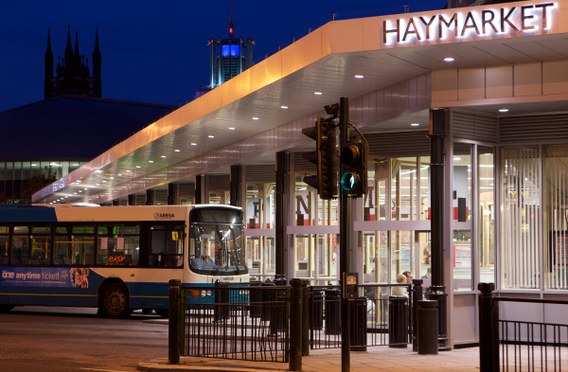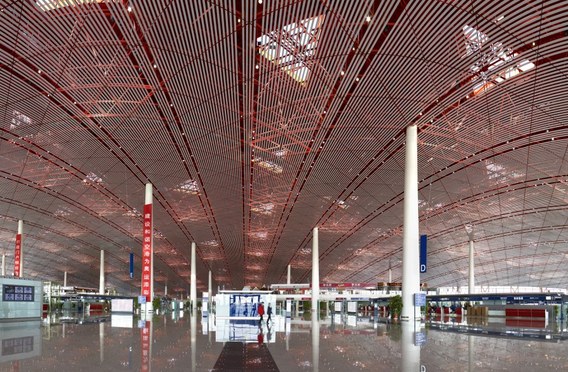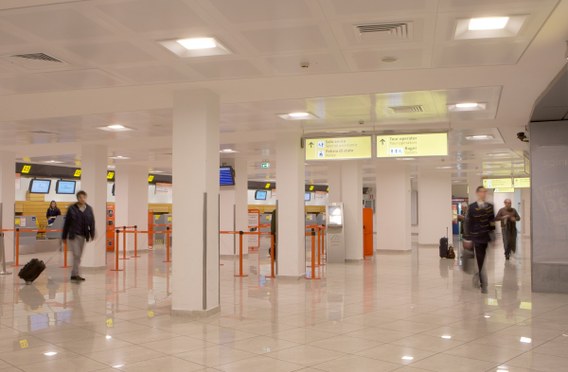Transportation
Creating the right environment
When lighting transportation terminals it is important to differentiate between controlled and uncontrolled facilities. Controlled facilities would be airports and ferry terminals for example where passenger movement is according to well defined procedures and permissions. Uncontrolled facilities would be rail, metro and bus terminals where passengers board and disembark with no formalised checking or controls.
In controlled facilities there are generally different departure and arrival spaces. In departure areas users options are restricted in that they have to remain in the locality until their transport leaves and therefore the environment should be comfortable and calm, easing the burden of waiting, especially in the case of delays. In arrivals areas the aim is to help users leave as quickly and safely as possible, requiring a more functional and business-like environment that does not promote tardiness. This includes requirements for baggage retrieval facilities and formal entry checks.
In uncontrolled facilities the difference between departure and arrival spaces generally does not exist, a single space performing both functions. However as there is less formal support and guidance the area has to provide a safe environment with clear route-marking for navigating through the space. This is especially important at boarding areas where the transition between platform and transportation should be clearly defined.
In Europe lighting requirements for transportation are given in the document EN 12464-1 Lighting for indoor workplaces and EN 12464-2 Lighting for outdoor workplaces.
Best practice
In uncontrolled facilities it is important that the installed luminaires are suitable for the anticipated environmental conditions. This should including considerations of moisture, dirt and the potential for physical damage, either accidental or intentional.
Luminaires for ferry terminals and facilities near the sea, such as train to ship transfer terminals, may exist in relatively harsh environments with high levels of airborne salt and dirt and it should be ensured that the luminaire uses materials resistant to these conditions.
Luminaires for airport terminals can be expected to be in clean and dry environments. However as these facilities require high levels of security they should provide good levels of vertical illuminance to adequately light people, especially faces. Care should be taken to prevent disturbing reflections in flooring which frequently has a highly polished finish. However some reflections can create visual interest and sparkle. Lighting to reveal faces is also important in most uncontrolled terminals where a user needs to feel safe when travelling during the night hours.
Positioning of luminaires should provide maximum guidance as to the geometry of the space, giving a coherent visual story to the user. It is important to light vertical surfaces, giving the space size and scale and providing a more pleasant ambiance. Light coloured surfaces will increase the feeling of space.
Taking control
The use of photocell controls to react to levels of daylight can ensure the correct artificial light level at the required time. Dimming of lighting at hours of low usage can also significantly reduce energy usage.
In outdoor facilities and areas it is important to control obtrusive light, preventing light from going into adjacent areas or upwards into the sky. This is also true of indoor spaces with large areas of glazing. The use of asymmetric luminaires that direct light back into the interior space and away from the windows will use energy more efficiently whilst reducing spill light into the exterior areas.



